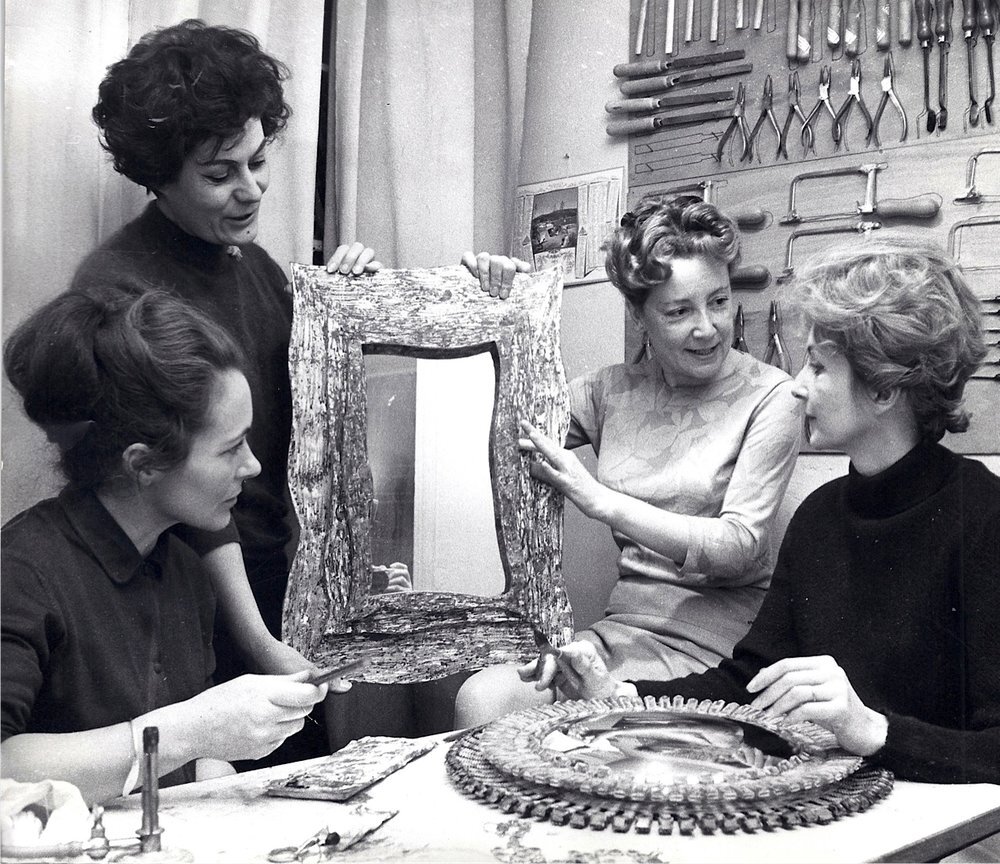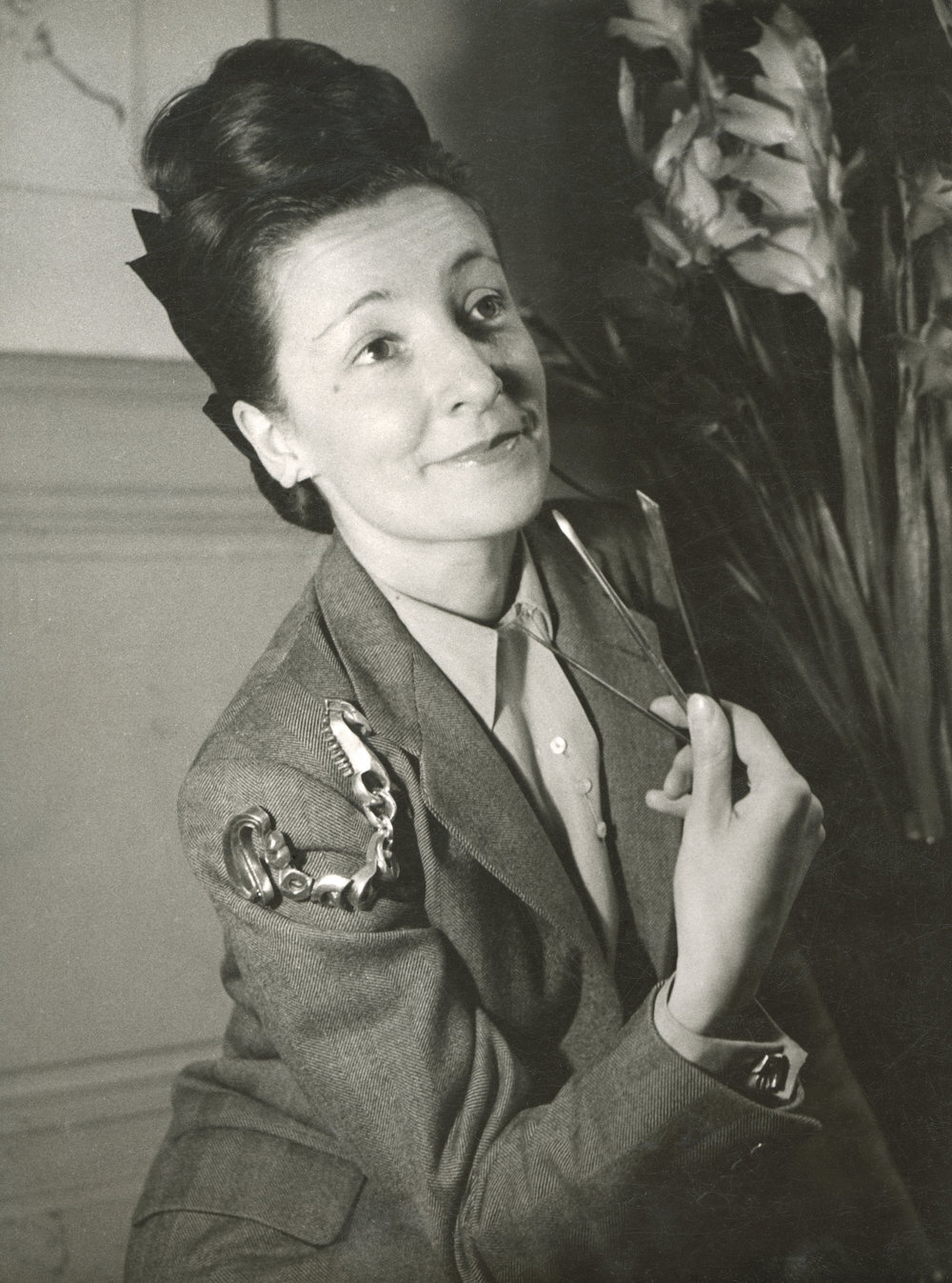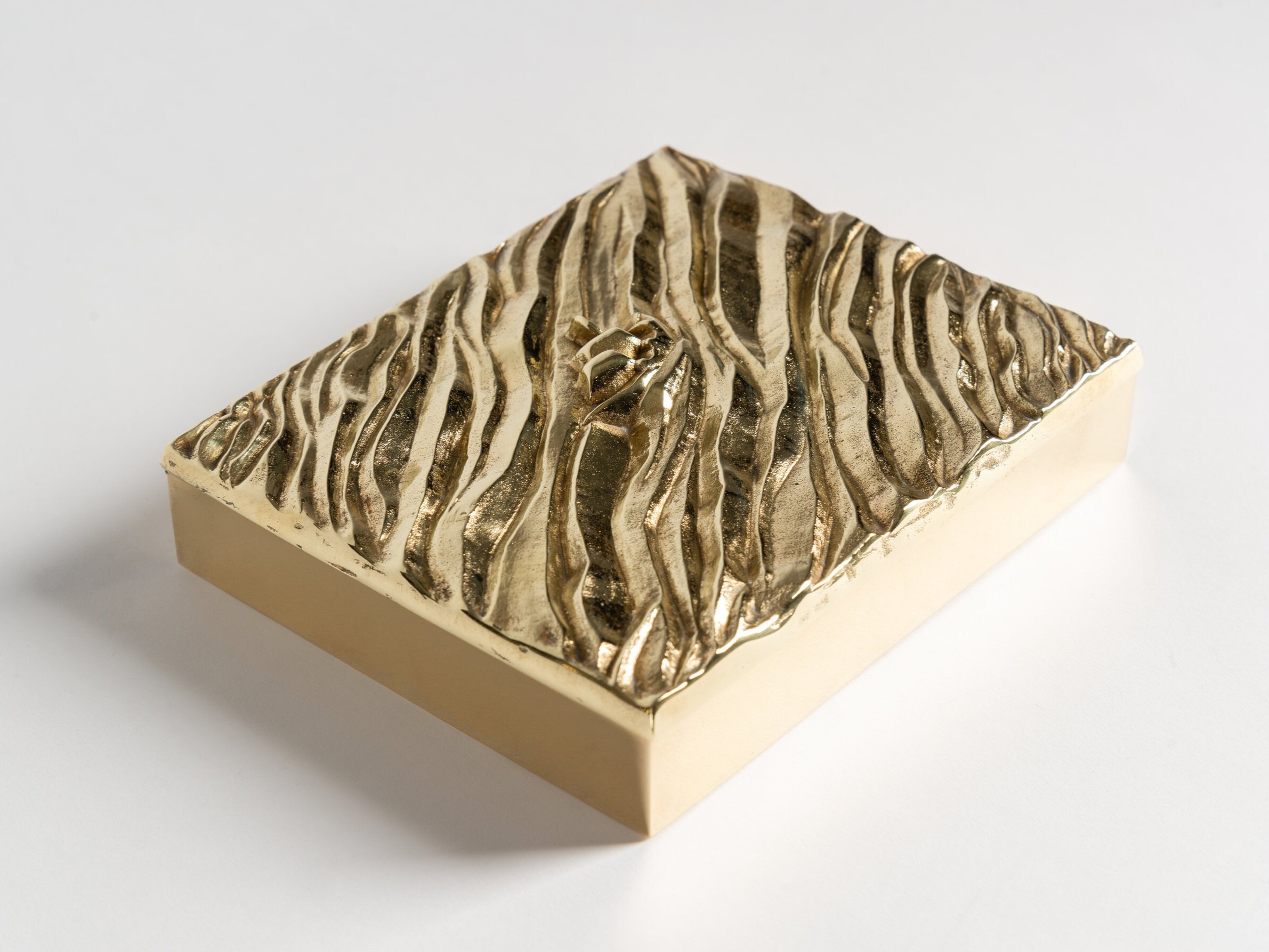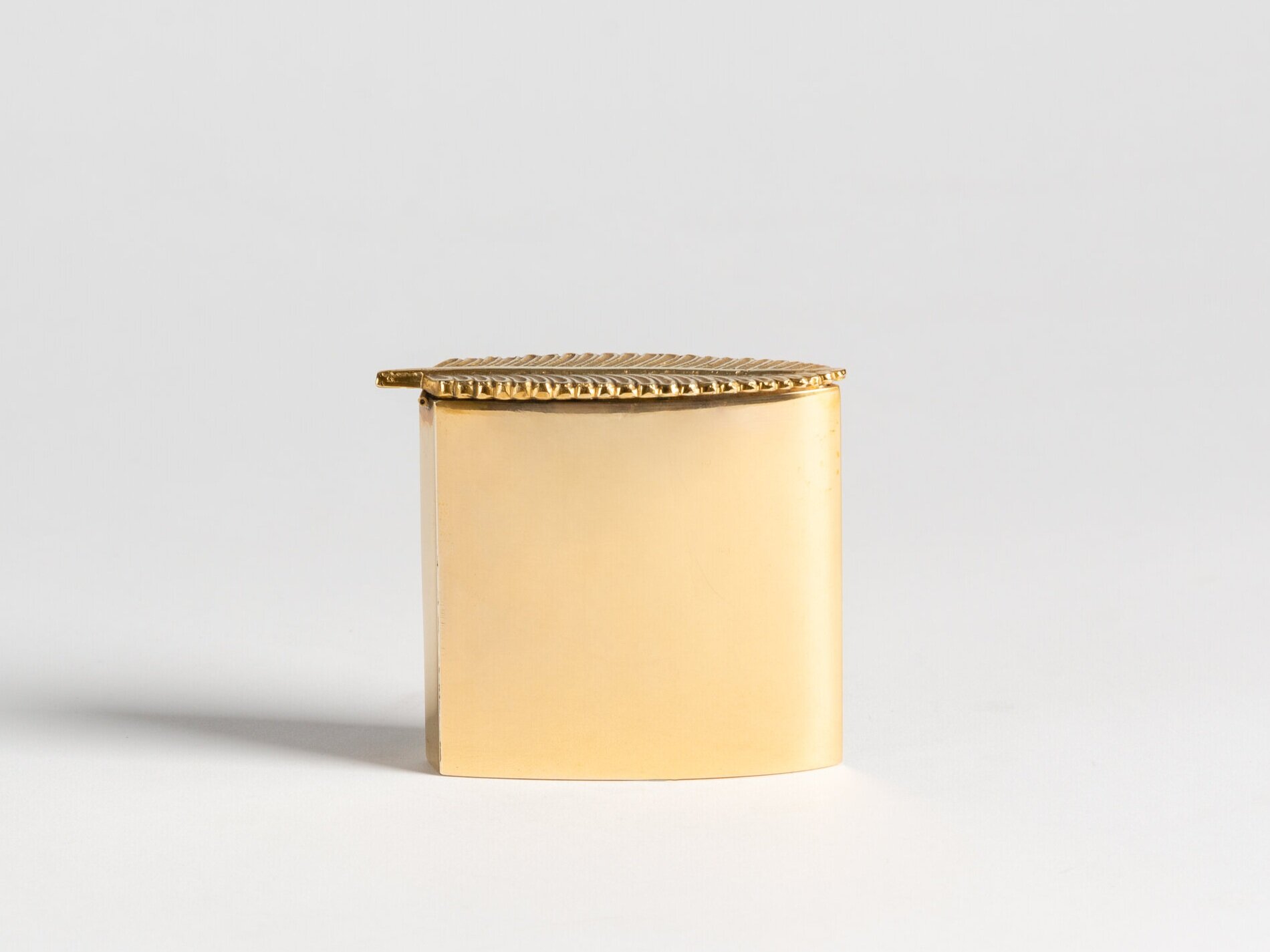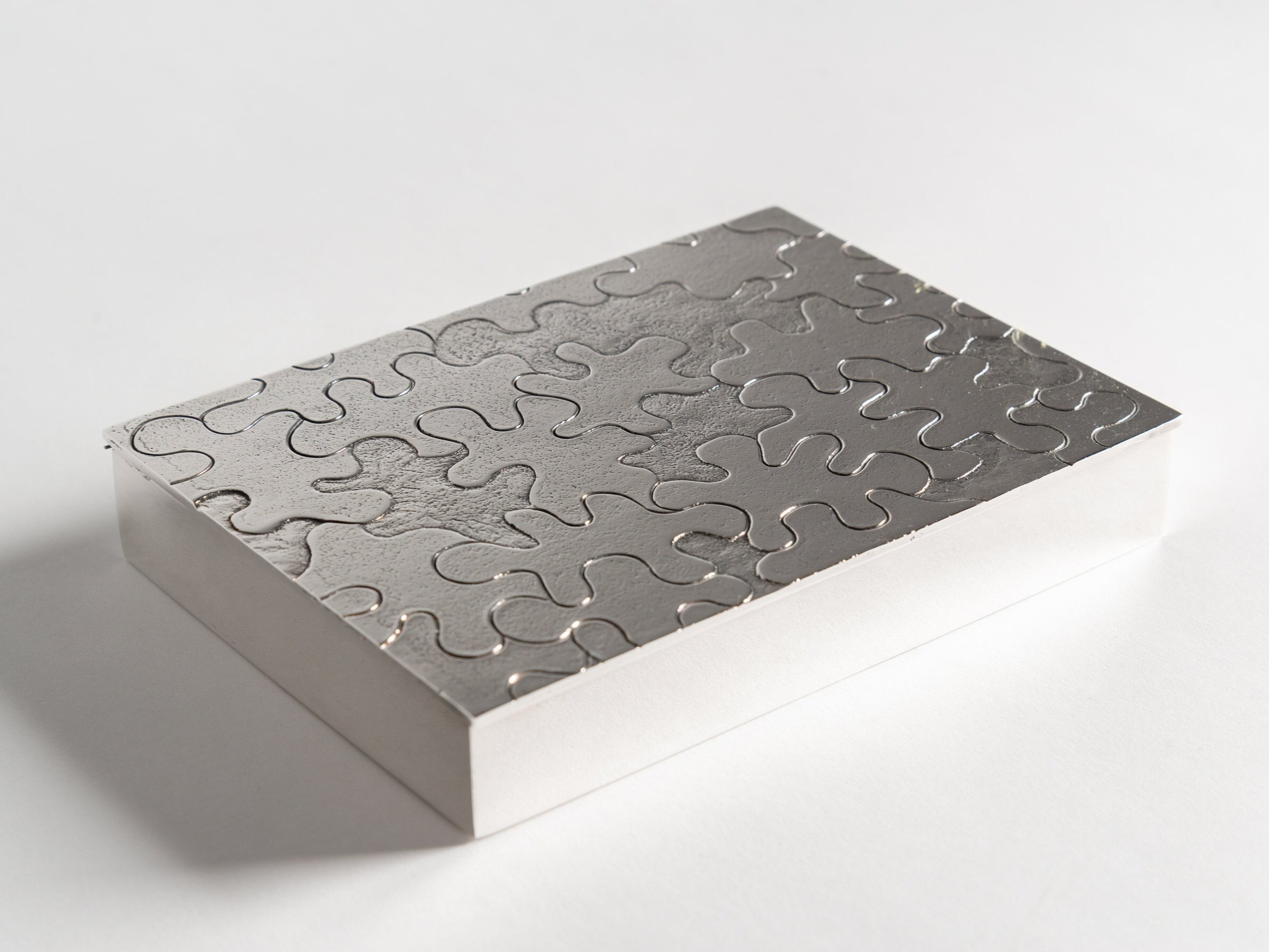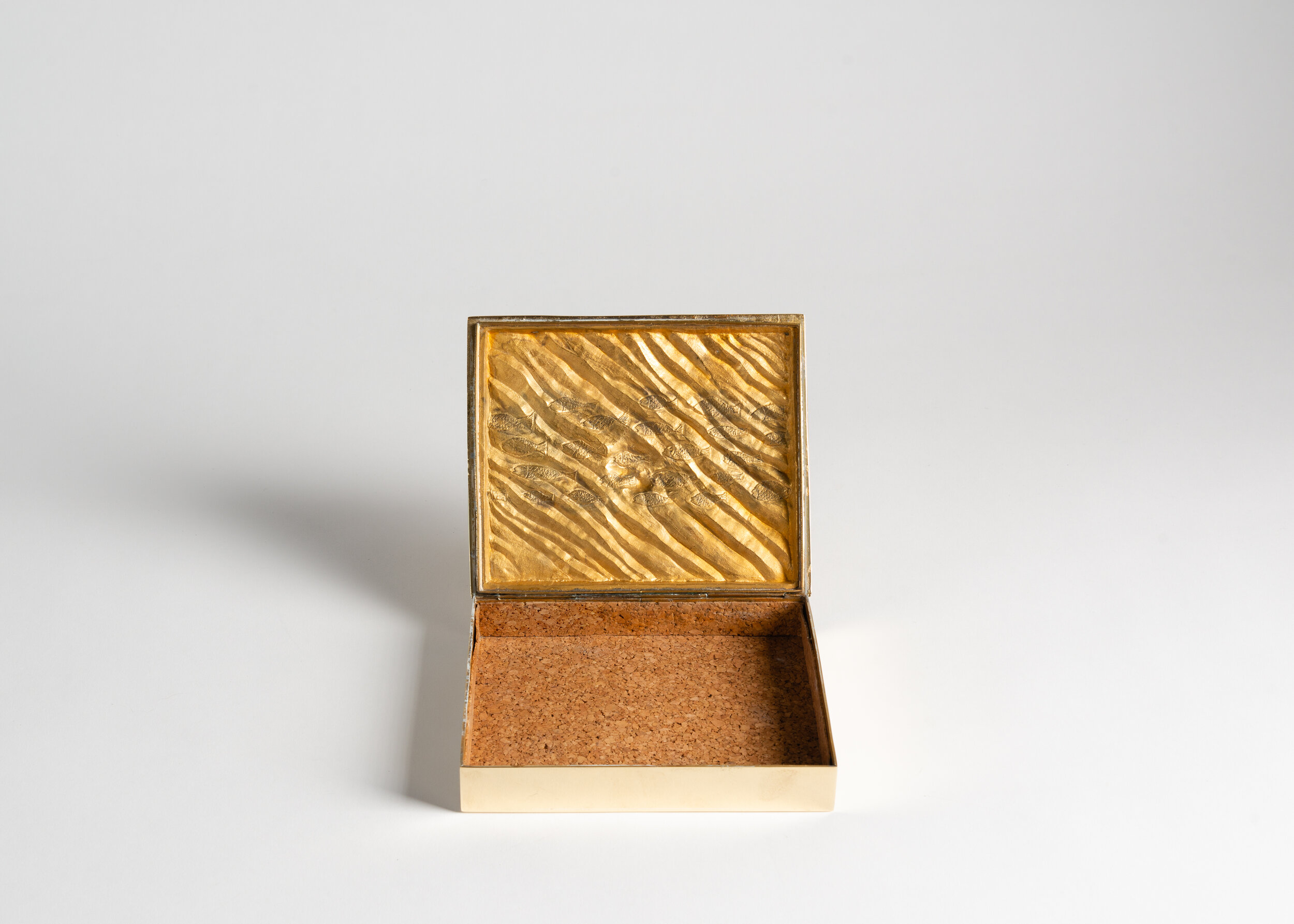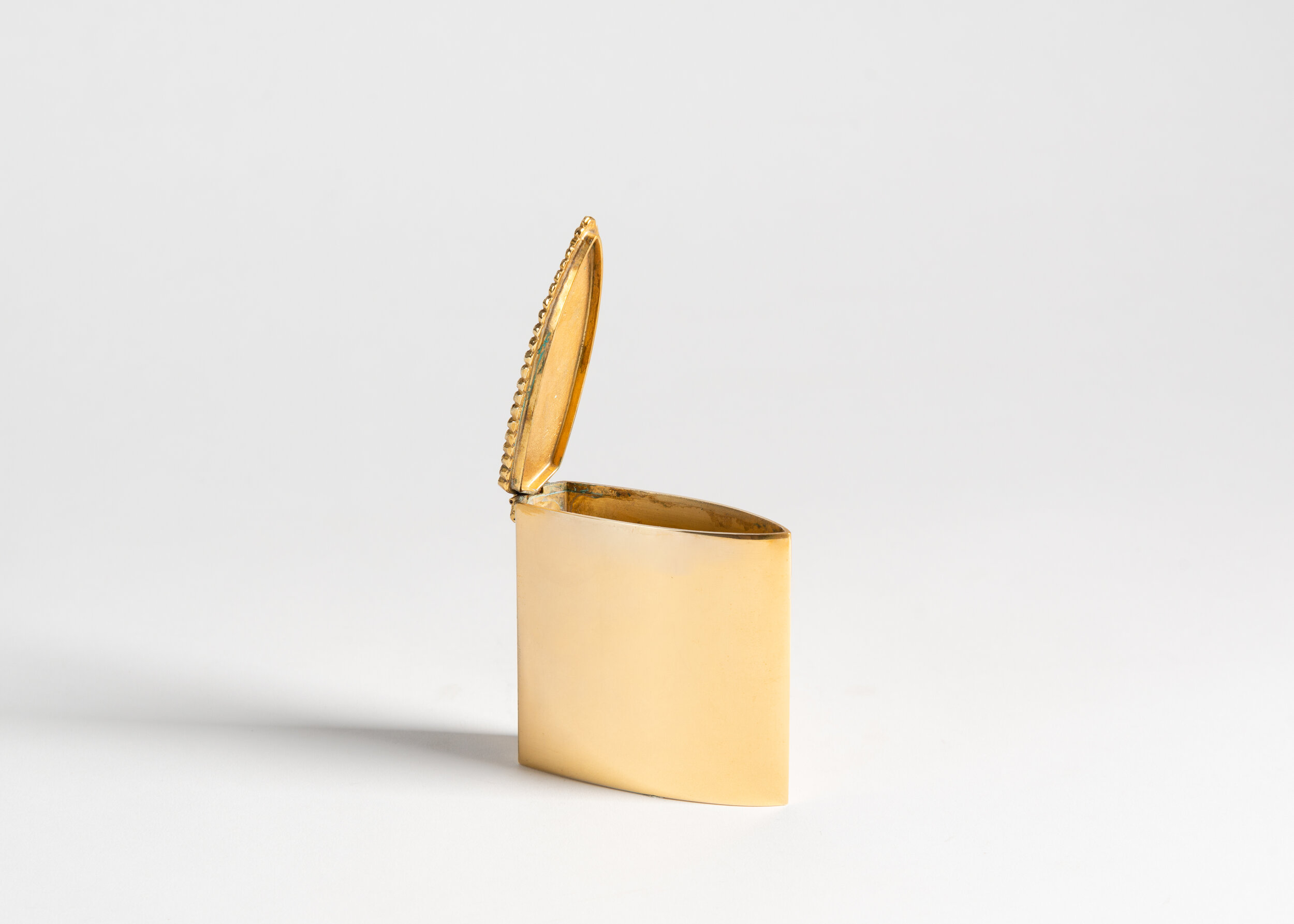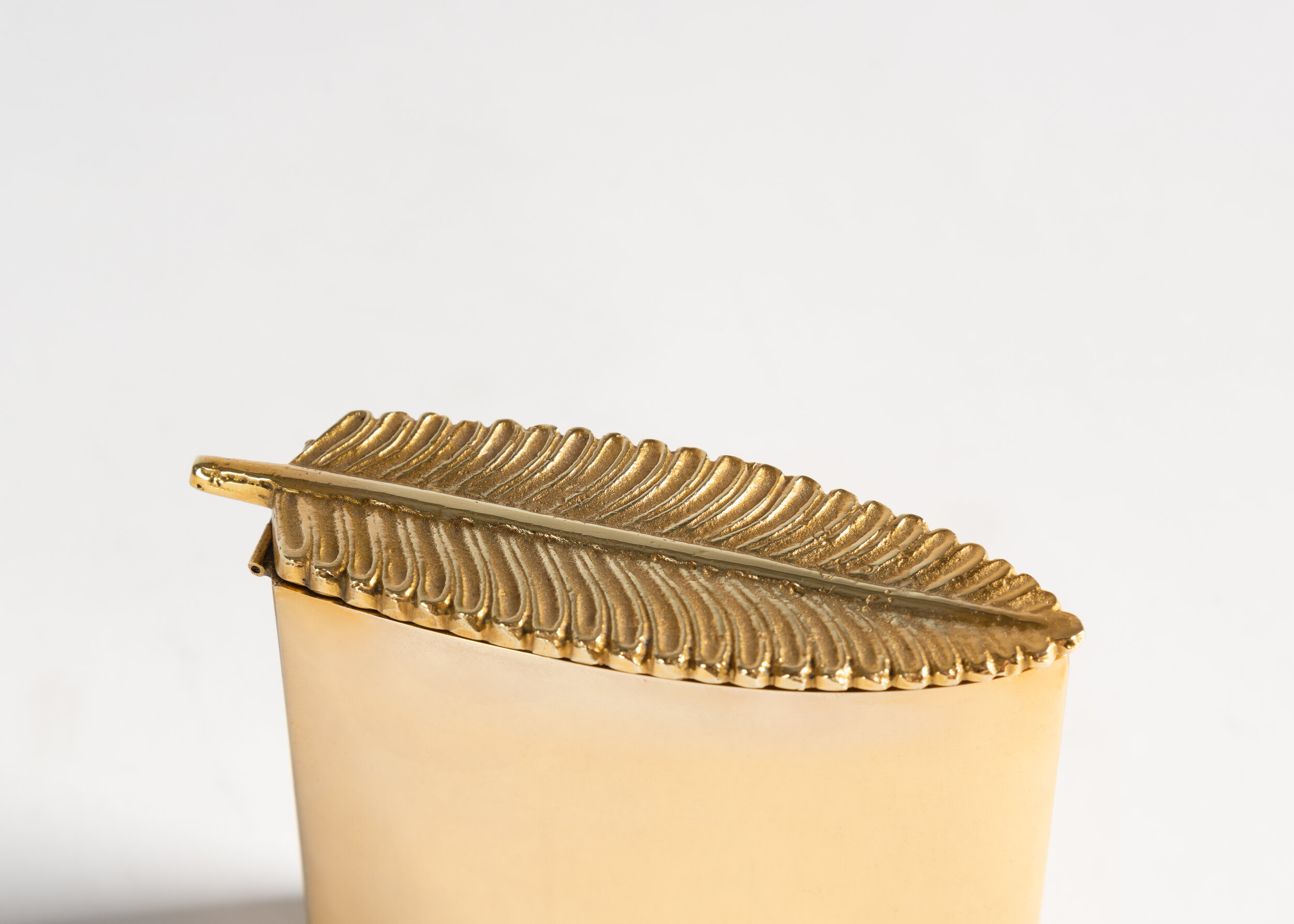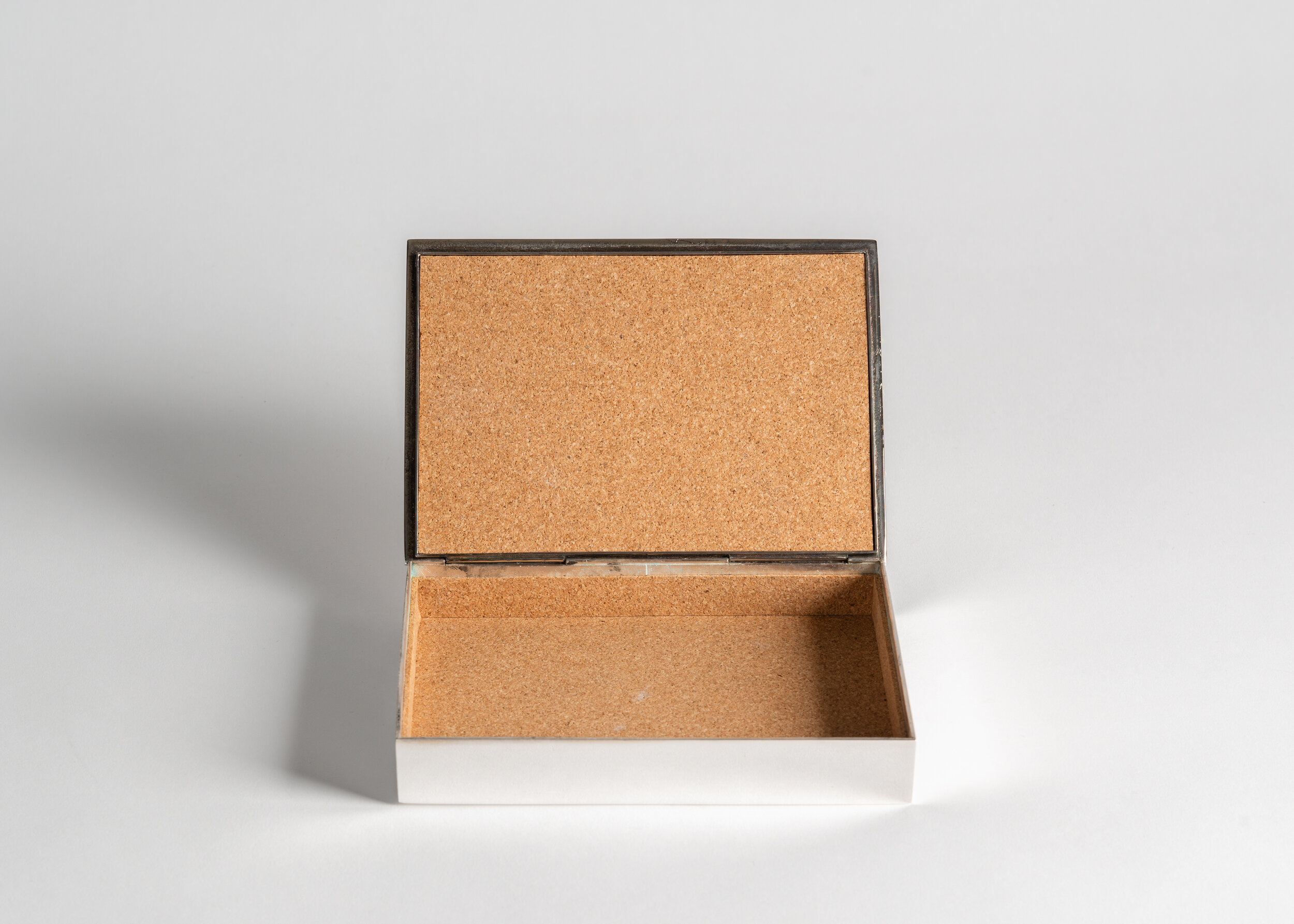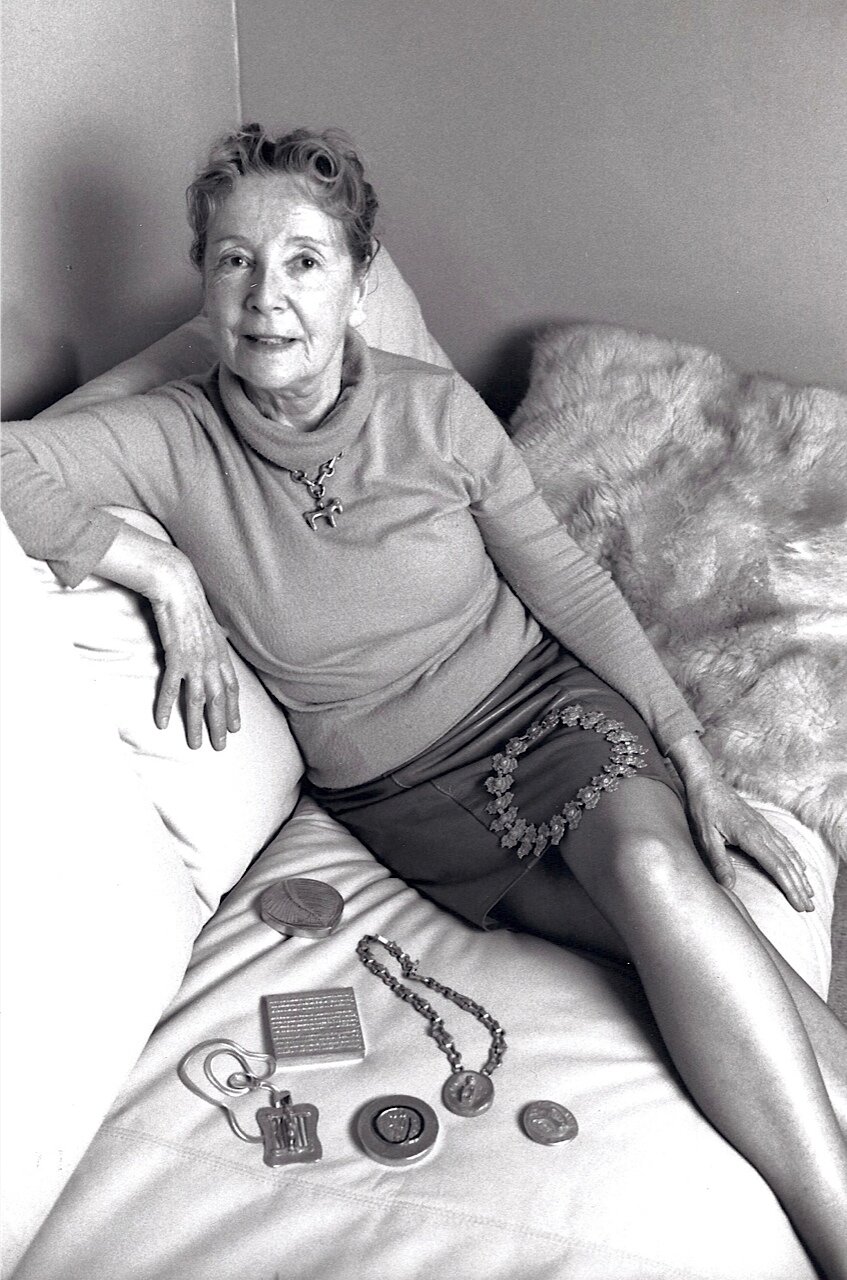LINE VAUTRIN (1913 - 1997)
Line Vautrin, a revered French artist of the 20th century once dubbed “the poetess of metal” by Vogue magazine, created a legacy of inspired work that The New York Times described as “bold, brilliant, barbaric and intricately crafted.” Her idiosyncratic vision and refined craftsmanship gave rise to highly original jewelry and decorative objects, infused with her passion for language and symbology.
Born in 1913 to a family of metalworkers, Vautrin’s lack of a formal art education did not prevent her from mastering the skills of casting, chasing and gilding bronze by the time she was 14. Though bronze was then limited solely to industrial use, it remained Vautrin’s metal of choice when she began creating her gilded and silvered buttons, adornments, compacts and boxes. An artist and intellectual at a time when many young women were afraid to be more than conventional and bourgeois, Vautrin took a booth in the 1937 International Exposition in Paris, where she gained enough of a following to warrant renting a tiny showroom. But it was during World War II, when precious metals were scarce and Vautrin’s work in bronze provided a much needed escape into romance and delight, that her popularity truly soared.
A few short years later, Vautrin opened a progressive atelier in the Marais, as well as an exquisite boutique on the rue du Faubourg SaintHonoré, where a statue of St Eligius, the patron saint of goldsmiths, presided over the entrance. A frenzy of ceaseless innovation ensued, defying any of the traditional genres of the decorative arts. The repetition of motifs—primitive patterns and elements that recall ancient hieroglyphics and pictographs—was influenced by Vautrin’s research into ancient goldsmiths’ work in the archaeological museums of Cairo. Folk tales, lines of poetry and aphorisms were all fodder for her clever imagination. She became known for the whimsy and double entendres layered onto her beautiful pieces, and for her witty use of the rebus, complex visual riddles in which words are represented by elaborate combinations of pictures and letters.
It’s no wonder that these small miracles of creativity and ingenuity have been collected by such luminaries as Diego Giacometti, Brigitte Bardot, Caroline of Monaco and Christian Lacroix. Vautrin’s reputation as an alchemist capable of coaxing poetry from metal is destined to endure.
La Mer "The Sea" Box
France, circa 1942-1950
Bronze doré box, interior lined with cork
1.5"H x 5.75"D x 7"W
A rare model. The image on the lid is inspired by an iconic photograph by Dora Maar, muse to Picasso and a noted artist in her own right, originally used in an ad for Pétrole Hahn hair lotion in the 1930s. Vautrin dedicated this piece to the singer Charles Trenet, a friend of her husband, who was known for his song "La Mer".
Courtesy of Maison Gerard
Photo by Arian Camilleri
Plume "Feather" Box
France, circa 1942-1950
Bronze doré box, interior lined with cork
2.25"H x 3.75"W x 1.25"D
Courtesy of Maison Gerard
Photo by Arian Camilleri
Puzzle Box
France, circa 1950
Bronze argenté
1.25"H x 7"W x 5"D
This large, flat bronze argenté box dating from 1950 has an intricate engraving of puzzle pieces cut into its top. Signed: Line Vautrin
Courtesy of Maison Gerard
Photo by Arian Camilleri
“Vautrin says that the task she set for herself was to convey
‘a message in a minimum of lines -- that's my discipline.’
Across the years, the message comes through loud and clear.”
“My father, Jacques Armand Bonnaud, an artist and interior decorator, worked alongside my mother for many years. Their homes and their workshops were where I grew up, surrounded by craftsmen and artists with whom they worked, so I was totally immersed in the spirit of my parent’s works.”
LV's hands sculpting a broach in 1944.
“Vautrin was a pioneer in the rediscovery of the Marais … Her workshop was hailed as a model social enterprise: its staff of 50 or so employees was provided with common rooms for relaxation, a library and a refectory on the top floor, as well as the novel possibility of working part-time from home, free from the constraints of the workshop.”
Maurles, Patrick., “Obituary: Line Vautrin”, October 22 2011, Independent
